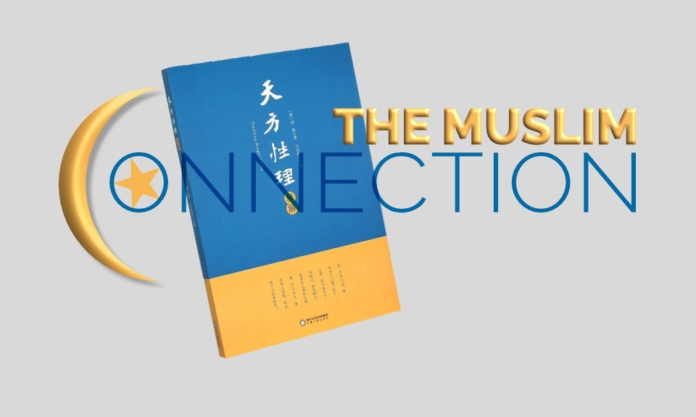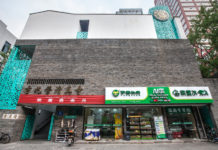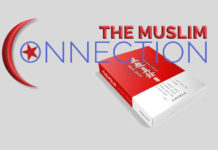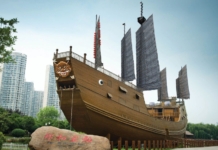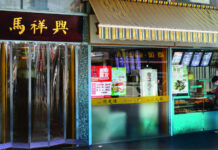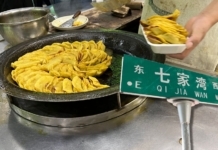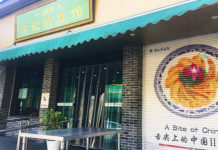Today, if one was to introduce the three Abrahamic faiths systematically to a crowd of people unfamiliar to their beliefs, one might begin by listing their key religious texts (i.e. the Torah, the Bible, the Quran), important figures (prophets, etc.), central tenets of belief, before possibly delving into the list of prohibited actions, legalistic elements or dietary restrictions.
In Ming/Qing Nanjing, however, the Confucian Muslim scholars (Huiru; 回儒) clearly did not embody this approach. They didn’t bother translating the Quran, which at that point, still had no existing Chinese translation after 900-plus years of Muslim presence in China.
Instead, they chose to focus on explaining, as Sachiko Murata notes in her book, “Chinese Gleams of Sufi Light”; “The Islamic perception of God, the universe and the soul”. Or, the core principles of what they believed.
Such an undertaking to describe Islamic concepts and terms using another language with its own pre-existing intellectual tradition has no real comparison in Muslim history. Murata argues that the Muslims never encountered this issue elsewhere. In her words, “The Muslims took their own languages with them, first Arabic, then Persian”, later using Turkish and Urdu, which were, “in effect new creations of Islamic civilization itself”.
That’s what makes the Huiru scholars arguably the first case of Muslims writing on Islam in the language of a pre-existing intellectual tradition all the more impressive.
There was great context to this phenomenon, however. This Nanjing Islamic “renaissance”, occurred on the backdrop of the Jesuit China mission.
During the Ming Dynasty, Italian Jesuit missionary, Matteo Ricci (1552 – 1610 CE), worked on converging Confucian terms into the explanation of the Catholic faith. And it is very likely that these were the seeds that influenced how Wang Daiyu, Liu Zhi and their peers, eventually presented Islam to their contemporaries.
Ricci and his disciples established themselves as “West Confucians” (西儒) and studied the classics in order to draw comparisons and describe Catholicism using Confucian terminology to convert locals. Though the Sino-Muslims had apparently no interest in conversion, they very clearly thought this method of adapting principles, ideals and most importantly; terminology, was key to making Islam accessible to their own communities.
And as native learners of the language, they had a leg up over the West Confucians in integrating those principles more seamlessly.
Just 2-3 years after Wang’s passing in 1657-1659, Liu, often considered the top Huiru scholar, was born in the rich intellectual climate of Qing Dynasty Nanjing. Compared to Wang, Liu had the good fortune to first be educated by his well-read father, Liu Sanjie, before continuing religious studies at a now-nonexistent mosque in the city.
At 15 years old, he pursued a study of Confucianism, Buddhism and Daoism, and incorporated “Western studies”, at some point learning Arabic as well.
Liu eventually set up residence on today’s Qingliang Mountain (清凉山), at the age of 30. And it was here that he spent the next 20 years researching and writing what would become some of the cornerstone books on Huiru thought.
His most well-known work, “Tianfang Xingli” (天方性理; The Rites of Islam), focused on offering an expansive overview of Islam as told through adapted Confucian terms and principles. So well received was the text that it was republished 25 times over a period of 179 years.
Liu went on to complete four more books, some of which contained very, very loose translations of Persian and Arabic texts into Chinese, including a biography of the Islamic prophet, Muhammad (by modern standards, it could only be understood as loose paraphrasing and even explicit interpretation).
Throughout adulthood, Liu traveled through multiple provinces to seek critique on his work. In his later years, he became the only Muslim to successfully submit his book, Tianfang Dianli, into Emperor Qianlong’s, “Siku Quanshu” (四库全书); the largest collection of books in Chinese history.
Liu, for his part, was more integrative and accepting of neo-Confucian ideals than even Wang. He established a cross comparison of the Sufi approach to pushing the self to become closer to God, with the Confucian idea of “self-cultivation”.
Liu further compared concepts of the idea of a “sage” in Confucianism to the idea of the “prophets” in Islam and the “perfect man” in Sufi understandings, concluding they were one and the same, with Muhammad being the “Ultimate Sage” (parallel to what is often referred to as the “Seal/Final of the Prophets” in translations of the Arabic phrase). That of course, in his reading, meant that Confucius and Mencius were by extension, prophets, just like Muhammad, Jesus and Moses.
Liu and Wang’s works are testament to a unique religious revival local to the Nanjing Muslim scene. And it could only have happened here, built upon years of rich dialogue in convergence, with a native understanding of the Chinese classics.
Though their legacies did not ultimately translate into practice in the modern-day due to global interaction with more orthodox practices of Islam, Wang and Liu’s efforts continue to affect academics today as they re-examine how the Islamic tradition is presented and explained through Huiru scholars’ eyes.


